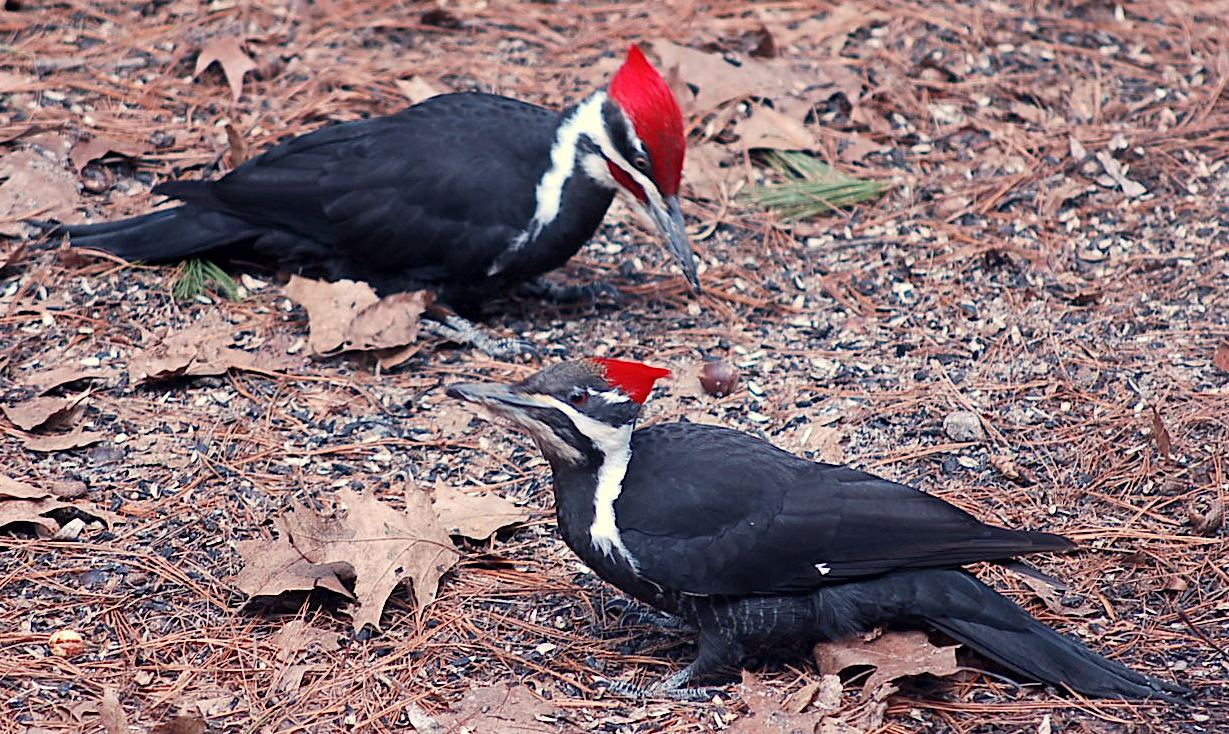Woodpeckers in Florida Populace: Variety Review and Preservation
Woodpeckers in Florida Populace: Variety Review and Preservation
Blog Article
Woodpeckers: A Comprehensive Overview to Recognizing These Special Birds
Woodpeckers, with their distinct behaviors and physical qualities, have long astounded the interest of ornithologists and nature lovers alike. From their rhythmic drumming resembling via the woods to their amazing adaptations for scaling tree trunks effortlessly, these birds provide an interesting research in bird biology. What really establishes woodpeckers apart is not simply their striking appearance yet likewise their important function in preserving the delicate equilibrium of environments. As we explore the intricate composition, diverse species, and eco-friendly relevance of woodpeckers, a deeper recognition for these unique birds and the enigmas they hold unfolds.

Woodpeckers' Drumming Habits
Woodpeckers exhibit a rhythmic and accurate drumming behavior that serves various important functions in their every day lives. This actions is largely related to communication, territory defense, and foraging. The distinct drumming audio is produced by the rapid pecking of their beaks against hard surfaces such as tree trunks, branches, or perhaps steel items.
Communication is an essential facet of woodpecker actions, and drumming plays a considerable role in this process. Woodpeckers use drumming to develop their existence, attract friends, and preserve contact with their companions and children. The frequency, intensity, and duration of drumming series communicate particular messages to various other woodpeckers in the location.
In addition to interaction, woodpeckers utilize drumming behavior for region defense. Woodpeckers in Florida. The loud and repeated drumming serves as an alerting to potential trespassers, signifying that the area is already claimed. By establishing their area through drumming, woodpeckers decrease the chance of disputes over valuable resources such as food and nesting sites
Furthermore, woodpeckers likewise employ drumming as a foraging strategy. The balanced pecking assists them locate pests hiding under the bark of trees by creating resonances that disrupt the victim's camouflage. This habits showcases the flexibility and ingenuity of woodpeckers in utilizing their drumming abilities for multiple necessary purposes.
Special Adjustments for Tree Climbing
Having actually mastered the art of drumming to communicate, defend territory, and forage, woodpeckers have developed special adjustments that promote their exceptional climbing up capacities in their arboreal habitats. Woodpeckers have zygodactyl feet, with two toes pointing onward and 2 toes aiming in reverse. These tail plumes give security and balance, enabling woodpeckers to maneuver up tree trunks with accuracy and dexterity.
In addition, woodpeckers have effective neck muscular tissues and an one-of-a-kind head framework that aid in their climbing up capabilities. Their strong neck muscles allow them to swiftly eat tree bark without experiencing whiplash, while their thick head and small brain act as shock absorbers, securing them from the influence of duplicated drumming. These adjustments jointly allow woodpeckers to navigate the upright globe of trees with effectiveness and grace.

Duty of Woodpeckers in Ecosystems
By foraging for pests under the bark of trees, woodpeckers aid control pest populaces, avoiding break outs that can hurt the total health of the woodland. Additionally, woodpeckers develop dental caries in trees that serve as critical nesting websites for a variety of various other bird varieties, advertising biodiversity within the More Bonuses community.
Furthermore, the drumming and vocalizations of woodpeckers play an important role in interaction and region facility. These sounds not only offer to attract companions but likewise aid define limits in between various woodpecker areas, lowering disputes and advertising an unified coexistence within the forest area. Generally, the presence of woodpeckers in woodland environments highlights their relevance as keystone species, affecting the characteristics and functioning of these environments in complex methods.
Composition: Specialized Beaks and Feet
In the useful source detailed web of woodland ecosystems, the specialized beaks and feet of woodpeckers are important adaptations that allow them to fulfill their vital ecological functions. Woodpeckers have distinct physiological features that are particularly designed to aid them in their foraging and nesting behaviors.
One of the most distinctive function of woodpeckers is their solid, chisel-shaped beaks. These beaks are perfectly adapted for boring right into wood to discover pests, larvae, and sap hidden under the bark of trees. The strong muscle mass and strong framework of their beaks allow woodpeckers to peck at a price of approximately 20 times per second without causing damage to their heads.
Additionally, woodpeckers have specialized feet that help in their acrobatic climbing up capacities. Their feet have two toes pointing ahead and 2 toes aiming in reverse, providing a strong grasp on vertical surface areas (Woodpeckers in Florida). This special foot plan, along with stiff tail plumes that serve as an encouraging prop, permits woodpeckers to hold on to tree trunks and branches easily while they look for food or excavate nesting cavities
Woodpecker Types Variety
Woodpeckers are a diverse group of birds located throughout different communities worldwide, with over 200 recognized types exhibiting adaptations to various settings. Woodpeckers have evolved to live in a variety of atmospheres, from woodlands and forests to meadows and deserts, each providing distinct challenges that have actually influenced the advancement of unique woodpecker species.
These adjustments enable woodpeckers to forage efficiently in their corresponding environments, decreasing competitors among types and advertising specific niche differentiation. In addition, geographic isolation and historic variables have played a role in shaping the circulation and variety of woodpecker varieties, leading to the broad variety of specialized adjustments seen in these fascinating birds.

Final Thought
To conclude, woodpeckers are fascinating birds that show special drumming habits, specialized adaptations for tree climbing, and play important duties in environments. Their composition, consisting Recommended Reading of specialized beaks and feet, enables them to thrive in their setting. With a diverse variety of woodpecker types found worldwide, these birds are crucial for keeping the health and wellness and balance of woodlands and woodlands. Recognizing and appreciating the details of woodpeckers can offer valuable understandings right into the environment.
Report this page